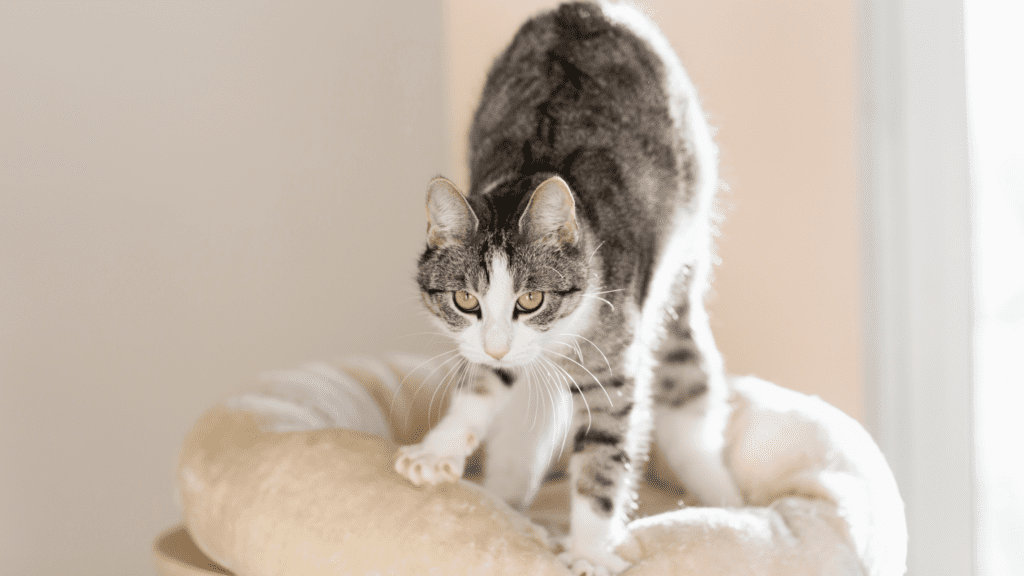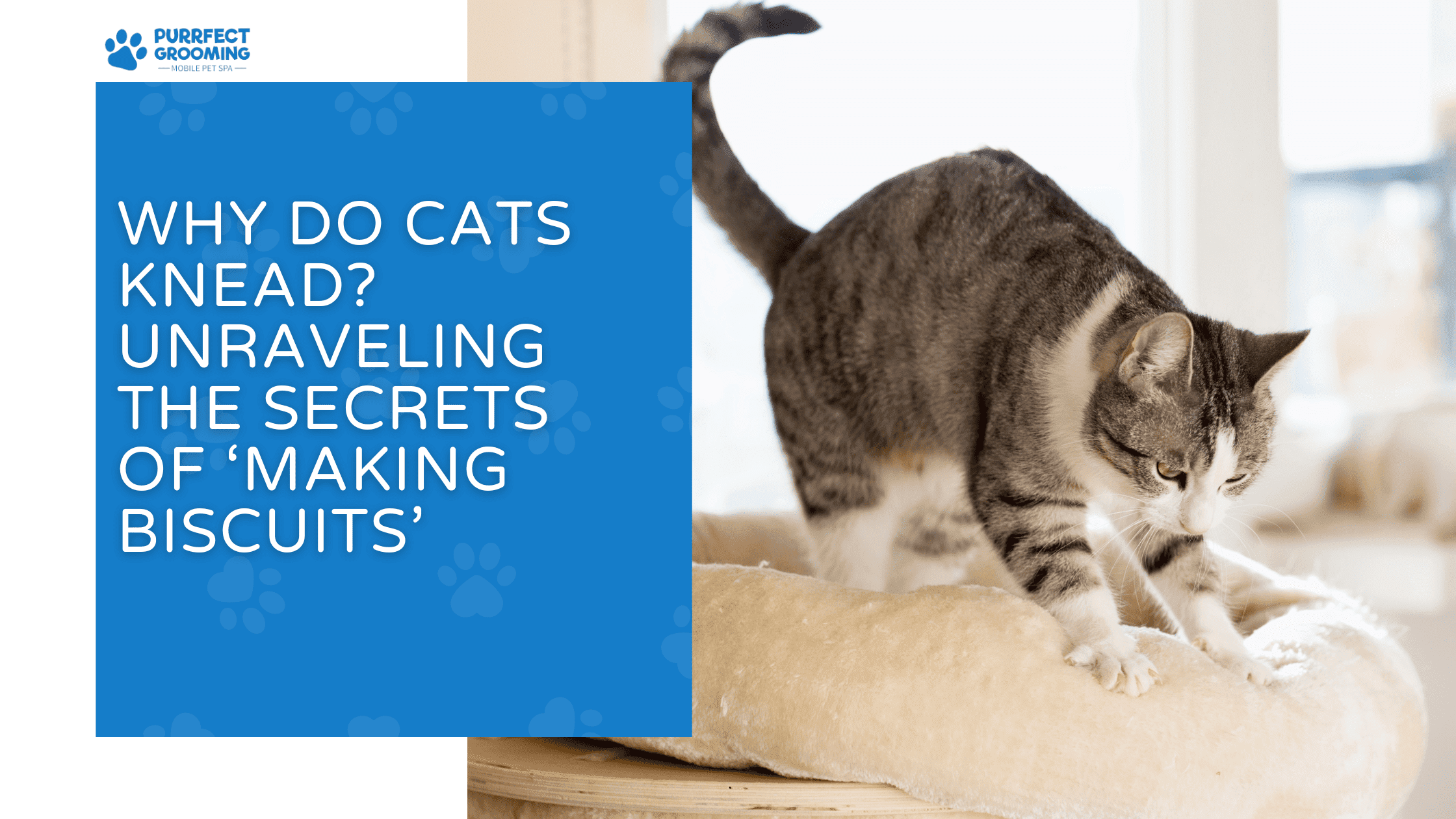Why Do Cats Knead? Unraveling the Secrets of ‘Making Biscuits’
Cat kneading, commonly referred to as “making biscuits”, is a rhythmic motion where cats push their paws in and out against a soft surface, alternating between left and right paws. This behavior is often accompanied by purring, a dreamy gaze, or even drooling.
According to a study published in Applied Animal Behaviour Science, 85% of cats display kneading behavior at some point in their lives. While the reasons behind this adorable habit are not entirely understood, experts believe it is a combination of instinct, comfort, and communication.
Let’s dive into the fascinating world of cat kneading and uncover the reasons behind this feline quirk.
Key Characteristics of Cat Kneading:
✅ Rhythmic motion of paws
✅ Pressing against a soft object (blanket, pillow, human lap)
✅ Alternating between paws
✅ May involve extended claws
✅ Often paired with purring
Why Do Cats Knead? The Science Behind It
Many theories explain why cats knead. Some are rooted in biology, while others are linked to psychological and social behaviors. Here’s a breakdown of the most accepted reasons:
| Reason | Explanation |
| Instinct from Kittenhood | Kittens knead their mother’s belly to stimulate milk flow while nursing. This instinct often carries into adulthood. |
| Marking Territory | Cats have scent glands in their paws. When they knead, they release pheromones to claim ownership of an area. |
| Seeking Comfort | Kneading is a self-soothing action that helps cats feel safe, much like a child hugging a stuffed toy. |
| Preparing a Sleeping Spot | Wild cats knead grass to create a comfortable resting area. Domestic cats still display this behavior. |
| Stretching Muscles | Just like humans do yoga, kneading helps cats stretch and relax their paw muscles. |
Origins of Cat Kneading: An Evolutionary Perspective
1. Kittenhood & Nursing Instincts
- Kneading starts when kittens are just a few days old.
- It helps them stimulate milk production while nursing.
- Even after they stop nursing, the habit remains a sign of comfort.
2. Wild Ancestry & Nesting Instincts
- In the wild, felines would knead grass or leaves to make a soft resting place.
- This behavior ensured they had a comfortable and safe sleeping area.
3. Marking Their Territory
- Cats have scent glands in their paw pads.
- Kneading helps them leave a familiar scent behind, marking their favorite spaces.
Psychological and Emotional Reasons for Kneading
1. A Sign of Affection
- If your cat kneads you, it’s a sign that they feel safe, comfortable, and bonded with you.
2. A Stress-Relieving Mechanism
- Kneading may help reduce anxiety in cats, similar to how humans bite their nails or fidget.
3. A Self-Soothing Action
- Cats may knead when they are feeling lonely or anxious to calm themselves down.
Why Do Cats Knead Their Owners?
Many cat owners experience their feline friend kneading directly on their lap, belly, or chest. But why?
🔹 Your Cat Associates You with Comfort:
Just as kittens knead their mother while nursing, they knead their human for comfort and security.
🔹 They See You as Their Parent:
Some theories suggest that cats view their owners as surrogate mothers.
🔹 They’re Showing Affection:
Kneading is one way cats express love and trust towards their human companions.

Different Types of Cat Kneading
Cats knead in different ways, and the variation often depends on their personality and comfort level.
| Type of Kneading | What It Means |
| Gentle Kneading | A relaxed, happy cat showing comfort. |
| Deep, Claw-Extended Kneading | A cat feeling very affectionate but also potentially marking territory. |
| Kneading with Biting or Licking | Often seen in cats with strong kittenhood instincts. |
| Frantic or Aggressive Kneading | Could be a sign of stress or overexcitement. |
Do All Cats Knead? Breed-Specific Differences
While kneading is a common behavior, some cats are more prone to it than others.
🐾 Breeds That Knead More:
- Ragdolls
- Siamese
- Maine Coons
- Burmese
🐾 Breeds That Knead Less:
- British Shorthairs
- Scottish Folds
- Russian Blues
Why Do Cats Knead Before Sleeping?
Much like how humans fluff their pillows before bed, cats knead to:
✅ Create a comfortable spot
✅ Feel secure and relaxed
✅ Stretch their muscles before resting
How to Handle Cat Kneading If It Becomes Uncomfortable
If your cat’s kneading becomes painful, here’s what you can do:
🛑 Trim Their Claws: Regular nail trimming can help reduce scratching.
🛑 Use a Blanket: Place a thick blanket over your lap to cushion their paws.
🛑 Redirect Their Behavior: Offer a soft toy or pillow for them to knead instead.
Fun Facts About Cat Kneading
- Some cats knead and suck on fabric, mimicking nursing behavior.
- Cats may knead more when they’re in heat, as part of mating behavior.
- Kneading is often accompanied by purring and drooling!
Conclusion
Cat kneading is one of the most endearing and mysterious feline behaviors. Whether they’re showing love, marking territory, or simply comforting themselves, kneading is a deeply ingrained part of a cat’s instincts.
Understanding this behavior can help cat owners strengthen their bond with their feline friends and provide the best care possible.
FAQs
1. Why do cats knead and purr at the same time?
Purring and kneading often go hand-in-hand because both behaviors indicate relaxation and happiness.
2. Should I stop my cat from kneading?
Not necessarily, but if it’s painful, you can redirect the behavior using a blanket.
3. Why does my cat knead and bite me?
This could be playful behavior, overstimulation, or a way to express affection.
4. Can kneading be a sign of pain or illness?
Rarely, but if kneading is excessive and paired with other unusual behaviors, consult a vet.
5. Why do some cats never knead?
Some cats express comfort in different ways, such as rubbing against objects or head-butting.
